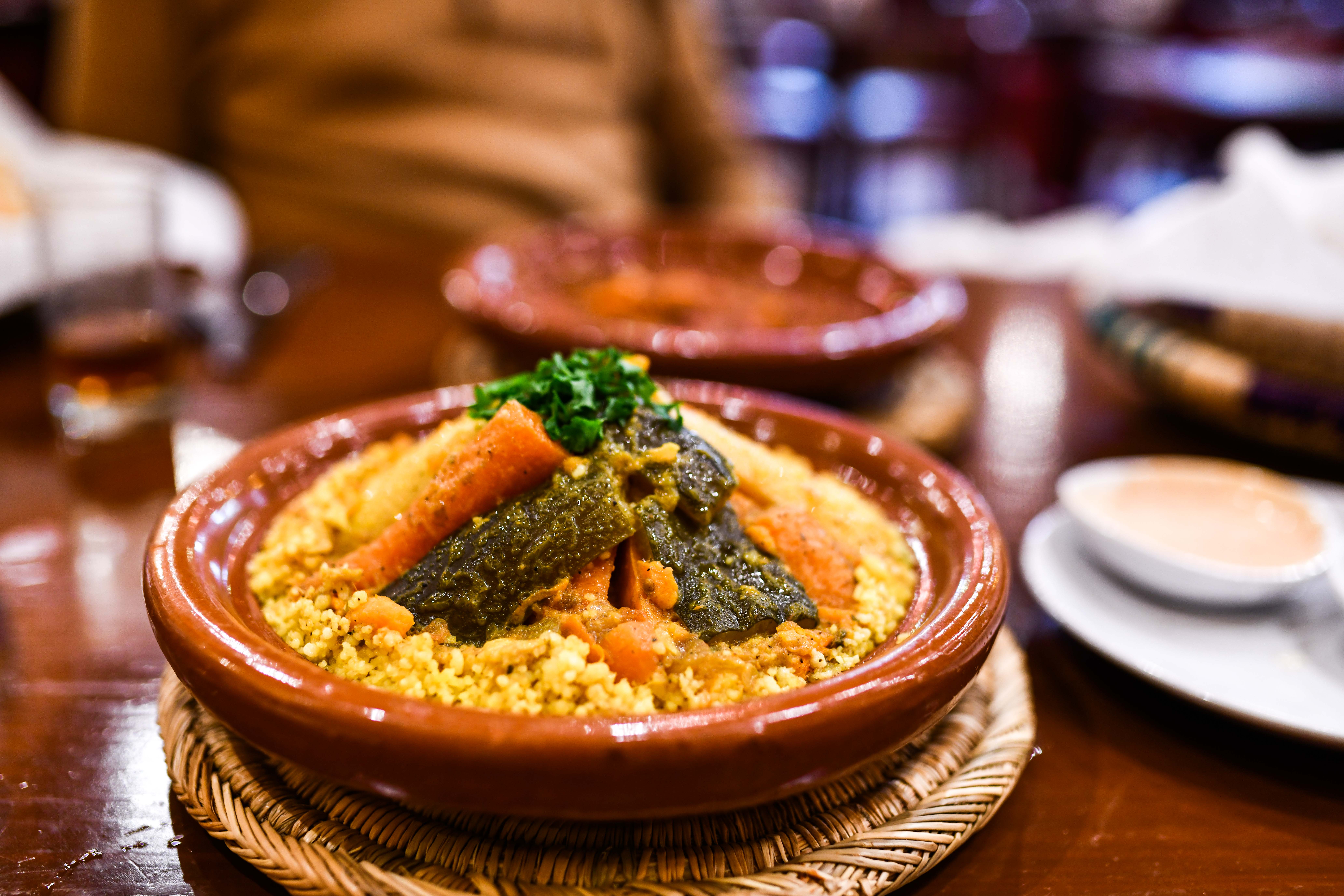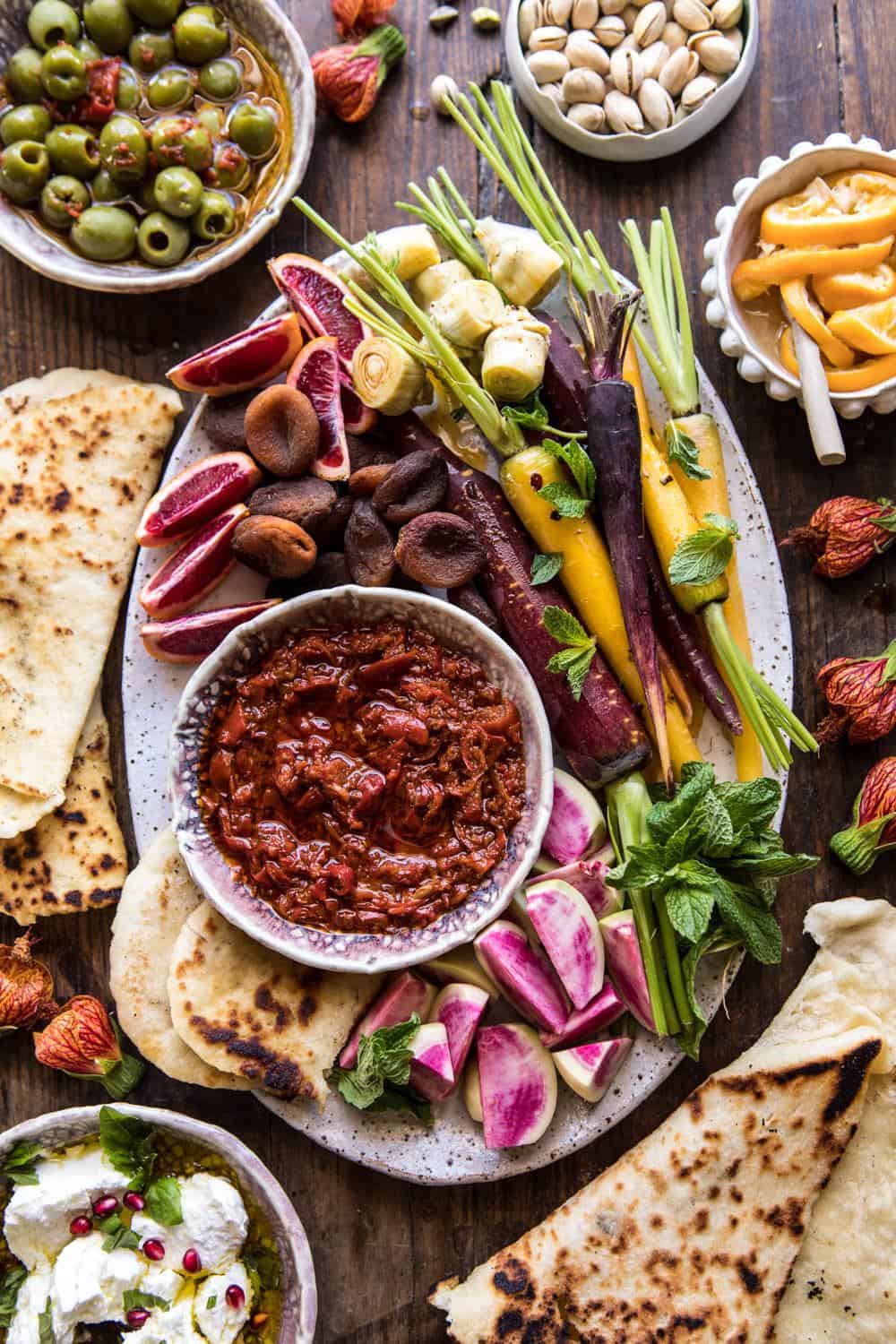Mediterranean Food: A Flavorful Journey With Tradition and Preference
Mediterranean cuisine serves as a remarkable crossway of practice and taste, attracting from a diverse variety of societies that span continents. This cooking heritage not only showcases making use of fresh, regional ingredients however additionally highlights the importance of common dining experiences that have actually been valued for generations. The profound flavors and wellness benefits related to the Mediterranean diet plan have actually garnered international adoration, yet under its surface lies a complicated story of historic impacts and regional specializeds that warrant further exploration. What special elements contribute to its enduring charm and value in modern culinary practices?
Beginnings of Mediterranean Food
The beginnings of Mediterranean cuisine are deeply rooted in a rich tapestry of history, location, and cultural exchange. This cooking practice arises from a region defined by its diverse landscapes, consisting of coastlines, mountains, and abundant levels, which have actually influenced its agricultural techniques and food production. The Mediterranean Container, incorporating nations such as Italy, Greece, Spain, and Turkey, has been a crossroads of civilizations for centuries, where profession routes promoted the exchange of components, techniques, and cooking viewpoints.
Ancient cultures, consisting of the Greeks and Romans, dramatically shaped Mediterranean foodways, emphasizing the relevance of fresh, seasonal fruit and vegetables and common dining. The spread of farming, especially the farming of olives, grains, and grapes, laid the structure for meals that remain staples today. The impact of numerous conquerors and investors, such as the Moors and Ottomans, presented cooking styles and brand-new flavors, even more enriching the food.
Today, Mediterranean food is commemorated not just for its flavor and variety yet likewise for its focus on healthful consuming, embodying a balanced technique to nutrition that proceeds to appeal to international tastes buds. This historical interaction of components and societies creates the essence of what we now identify as Mediterranean food.
Key Active Ingredients and Flavors
Mediterranean cuisine is defined by a lively range of crucial active ingredients and flavors that show the area's farming bounty and cultural heritage. Central to this cooking practice are fresh vegetables, fruits, and herbs, which give vibrant preferences and necessary nutrients. mediterranean restaurant las vegas. Staples such as tomatoes, eggplants, olives, and bell peppers are regularly featured, showcasing the region's varied climate and dirt
Olive oil, usually regarded as the backbone of Mediterranean cooking, conveys richness and depth to dishes. It is matched by a range of flavors and herbs, including oregano, garlic, and basil, which raise the flavors of meats, seafood, and grains. Grains, specifically wheat and rice, offer as basic components, with recipes like couscous and pasta being staples throughout the area.
In addition, vegetables such as lentils and chickpeas not just give protein but additionally add to the cuisine's robustness. Jointly, these ingredients create an unified equilibrium that specifies Mediterranean cuisine.
Regional Specializeds and variants
Diverse local variations and specialties identify Mediterranean cuisine, mirroring the special cultural influences, geography, and background of each area. In the coastal regions of Italy, for instance, fish and shellfish preponderates, with recipes like Sicilian caponata showcasing a blend of eggplant, olives, and capers. Greece is renowned for its use of feta cheese, olives, and fresh natural herbs, apparent in timeless preparations such as moussaka and spanakopita.
The Levantine countries, including Lebanon and Syria, stress using grains and flavors, with specialties like tabbouleh and kibbeh taking center stage. North Africa, specifically Morocco, sticks out for its fragrant tagines and couscous, commonly enriched with dried fruits and a rich selection of seasonings.
In contrast, the Iberian Peninsula highlights using cured meats and bold flavors, with Spanish paella and Portuguese bacalhau exemplifying the area's culinary diversity.
Each Mediterranean area not only commemorates its local ingredients yet additionally shows the historic profession courses and social exchanges that have formed its food society, developing a vibrant tapestry of flavors that captivates the palate.
Cooking Methods and Designs
Food preparation methods and designs in Mediterranean cuisine are as varied as the regions themselves, typically mirroring offered components and regional customs. The heart of Mediterranean cooking lies in its simplicity, where fresh fruit and vegetables, herbs, and olive oil take center stage. Techniques such as cooking, toasting, and sautéing are frequently a knockout post utilized, permitting the all-natural tastes of the components to radiate.
Grilling, prevalent in seaside areas, instills seafood and meats with a great smoky splendor, while toasting, specifically in the center East, boosts the sweetness of root veggies and meats. Sautéing, often made use of in Italian and Spanish dishes, supplies a quick approach to draw out the richness of garlic and onions, working as a structure for several sauces.
Cooking is another important strategy, especially in North African cuisines, where tagines simmer aromatic flavors and tender meats slowly, melding tastes in time - mediterranean restaurant las vegas. Baking, specifically in the context of bread and pastries, holds a significant place in Mediterranean society, with each region flaunting its own specializeds. In general, these diverse food preparation techniques not site link only commemorate the ingredients yet also reflect the ingrained culinary heritage of the Mediterranean, making each meal a testament to its abundant history

Health Benefits of Mediterranean Diet Regimen
Frequently acknowledged for its numerous health and wellness advantages, the Mediterranean diet regimen emphasizes the consumption of whole, minimally processed foods that promote overall well-being. This nutritional pattern is abundant in fruits, vegetables, entire grains, vegetables, nuts, and healthy fats, particularly olive oil, while urging moderate consumption of fish and chicken and limiting red meat and desserts.
Research study consistently links the Mediterranean diet to a selection of health benefits. Especially, it has actually been connected with a decreased threat of cardio conditions, greatly as a result of its focus on heart-healthy fats and anti-oxidants. The diet regimen is also believed to enhance cognitive feature and may lower the threat of neurodegenerative illness such as Alzheimer's.
In Addition, the Mediterranean diet regimen supports weight monitoring through its emphasis on nutrient-dense foods that promote satiation. The high fiber web content from fruits, vegetables, and entire grains help digestion and assists keep healthy and balanced blood sugar degrees.
In addition to physical health and wellness, the Mediterranean diet regimen fosters social wellness, as it motivates public meals and shared cooking experiences. Generally, embracing this diet is not only a path to enhanced wellness but likewise an event of tastes, society, and community.

Conclusion
In verdict, Mediterranean cuisine offers as an abundant tapestry of tradition and preference, showcasing diverse regional tastes and ingredients. The focus on fresh fruit and vegetables, olive oil, and fragrant herbs not just boosts culinary experiences however also promotes many wellness benefits. By accepting classic cooking methods and cultivating communal eating, this cooking heritage proceeds to influence and attach individuals across cultures, strengthening its standing as a cherished and prominent part of global gastronomy.

Cooking techniques and designs in Mediterranean cuisine are as varied as the areas themselves, typically mirroring look here readily available components and regional practices.In conclusion, Mediterranean cuisine offers as a rich tapestry of tradition and taste, showcasing diverse local tastes and active ingredients.